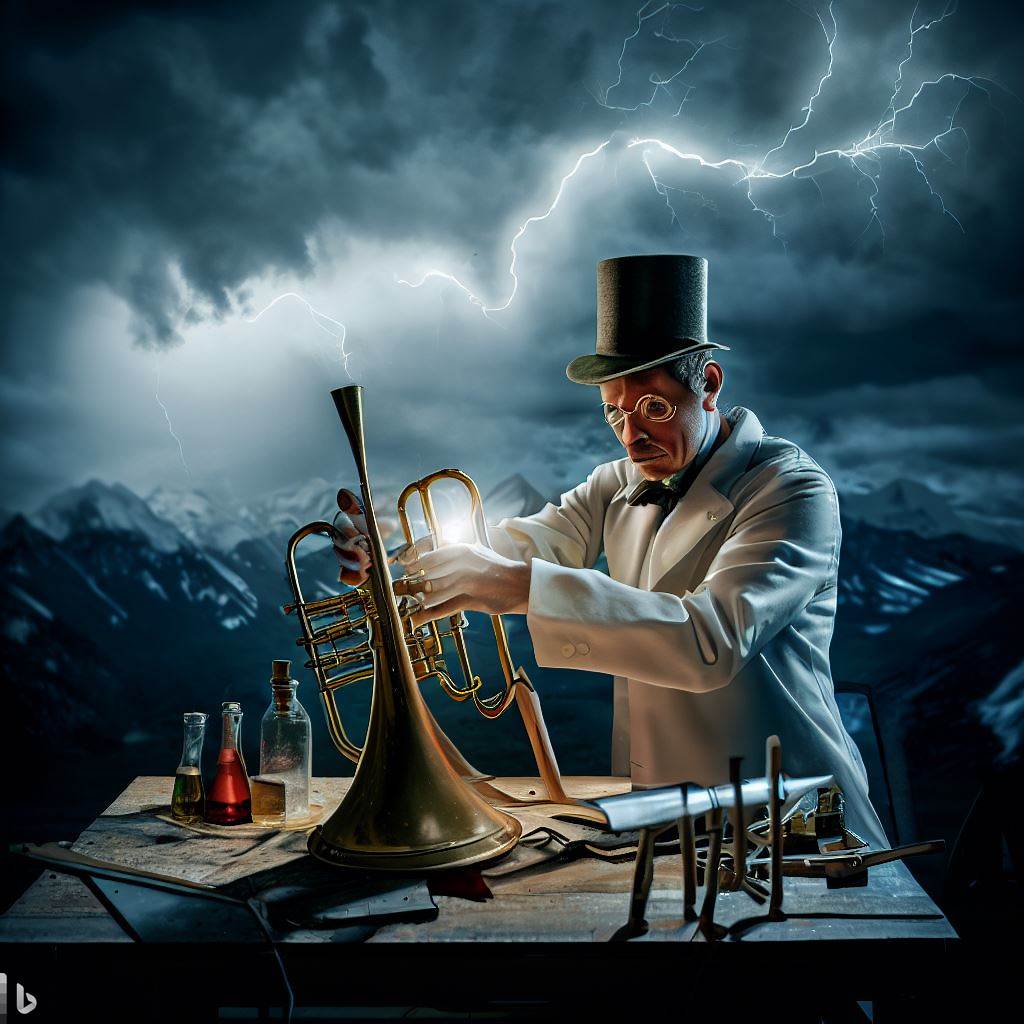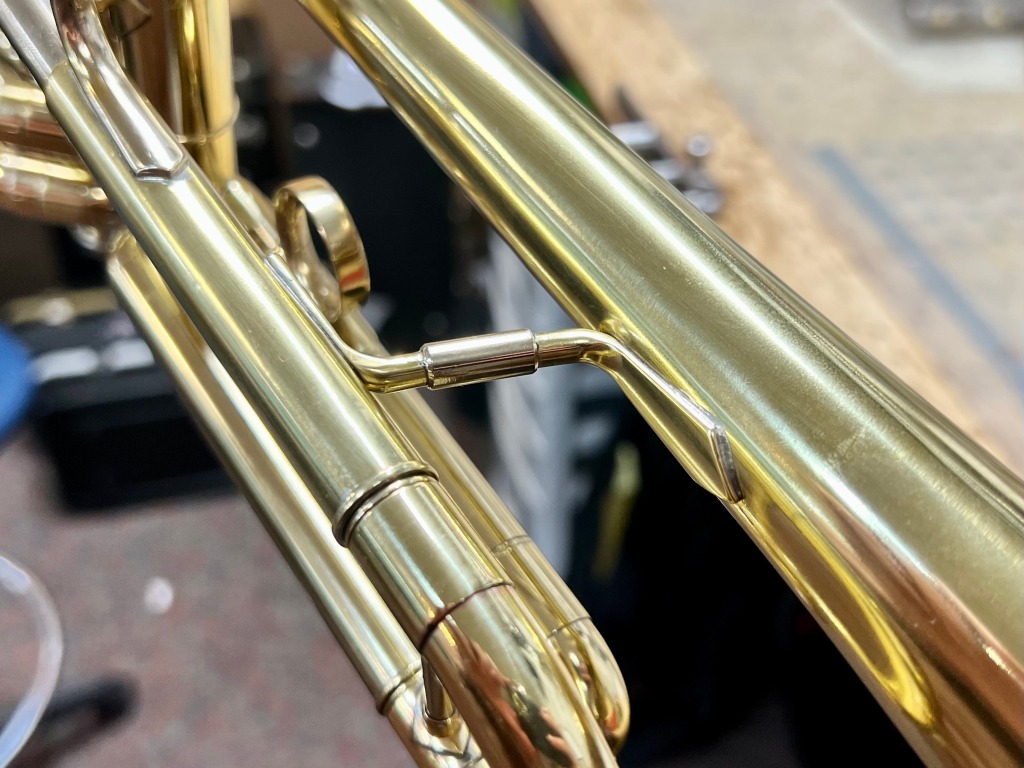For years and years I’ve played a Getzen Eterna 900 tuning bell trumpet made around 1981. It is a rare bird–I’ve only seen two listed publicly since I’ve actively watched trumpet classified ads a few years ago.
The TLDR version of this post is I had it restored with some new parts via Bájoc Music, and I love it!

Here’s how it sounds:
Now, here’s the longer version of the story.
I’ve been holding onto this horn for a few reasons. One is the valves are the BEST I’ve ever played, hands down. I’ve never played anything else with such perfect valves, including the newer Getzens.
Although the tuning bell setup is very quirky, it results in a ton of overtones and feedback, which I love, and the tuning bell pulled out all the way helps balance the horn more towards my chops versus towards the bell (all personal preference things).
Alas, the lead pipe had some significant red rot develop over the past 5 years or so. Additionally, the compression was off on the first valve. The second valve slide was very misshapen for some reason. After hemming and hawing about whether to sell or fix the issues, I decided to find someone that would overhaul the horn. At the end of the day, I haven’t found a trumpet that has worked better for me personally, and I was eager to see it reborn.
This is where I needed a bit of a mad scientist.

You see, I’ve always loved the Getzen valves. However, my personal preference for trumpet sound has always leaned towards the crispness and core of vintage Bach horns. I battled my Bach 37 for years and eventually went with the Getzen as my full-time horn because the Bach valves, slotting, and construction didn’t agree with me. (Side note: I’ve come to love my 37 again and still bust it out for classical/church type things).
You can hear the differences in my original Getzen versus the Bach in the videos below:
So I was intrigued a few months ago whilst perusing Trumpet Herald to find some apocryphal stories of Doc Severinsen replacing his Eterna stock bell with a Bach bell.
In my mind I started imagining what it might be like to preserve my Getzen valve block, but then modify the bell, mouthpiece receiver, lead pipe, and tuning slide to utilize classic Bach NY parts and specs (pre-Mt. Vernon).
After reaching out to a few shops and not hearing back, I decided to ping Jake Hoskins over at Bájoc Music. I am a big fan of Jake’s EVG invention, which totally transformed the valve action on my Schilke HC2 (you can read my review here).
Jake responded immediately and helped me cook up a restoration project. Jake has a ton of restoration options, which components and bells available in the style of Bach, Calicchio, Conn, Benge, Besson, and many others. After humoring me with some lengthy brainstorming conversations, we landed on:
- A lightweight, side-seamed replica Bach 25 yellow brass bell (sourced from Miles O’Malley Brass)
- A nickel silver Bach 25 lead pipe (also from O’Malley Brass)
- A Bach NY-style mouthpiece receiver ordered custom from Conn-Selmer — these are a little longer than traditional receivers
- A Bach NY-style tuning crook ordered from MK Drawing
- Z braces and 2nd valve casing brace ordered from Allied Supply
- Miscellaneous parts fabricated and soldered by Jake
My patience with the tuning bell set-up had evaporated due to loose slotting and weird intonation issues, especially in the lower register, so I asked Jake to convert the new bell to be a fixed installation and remove the tuning bell apparatus. To preserve the overtones and feedback feel, Jake suggested creating custom Z braces that he sawed in half and soldered together in the stress-free style a la Conn.


To mimic the feel of a tuning bell pulled all the way back, I asked Jake if he could custom solder a longer ferrule coming out of the first valve casing, which Jake totally nailed it as you can see here:

Jake fixed my second valve slide and also performed a PVA. This got the compression back to normal for the first valve and for the horn overall. The final product is quite stunning and an amazing player!




All in all, I’m really glad my Getzen could be reborn. I’d highly recommend Bájoc Music for restoration projects, and everything else Jake is selling these days.
What has been your experience with frankenhorns? What differences do you hear between the original Getzen and this new incarnation? Leave your thoughts in the comments, and thanks for reading!

Fascinating horn, I have to say. The 25 bell is not well known – as it is usually found only on Large Bore Strads which many people are wary of. I LOVE the 25 bell! I’ve had 2 and really liked them both… And I’ve often wondered about a 25 Lightweight. Great looking horn, too! Thanks for the pics and playing demos.
LikeLiked by 1 person